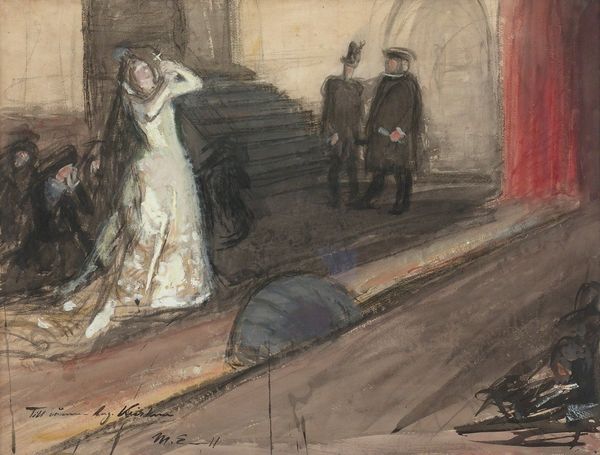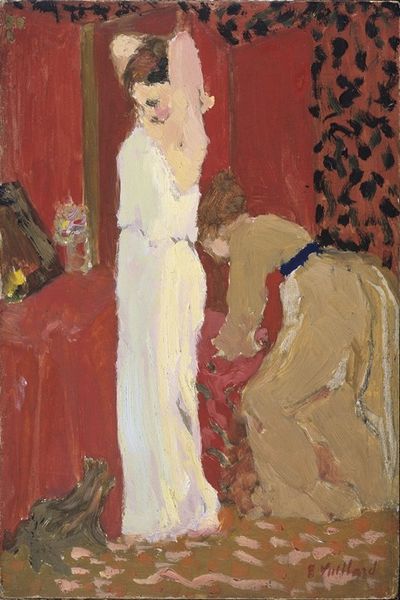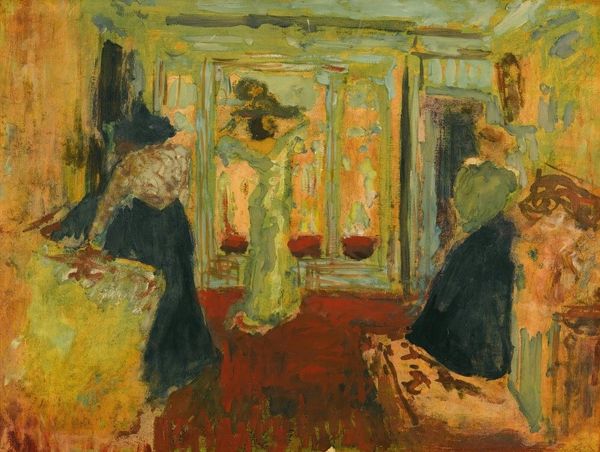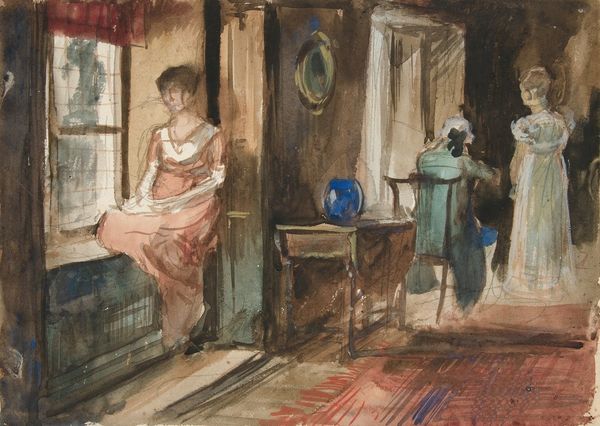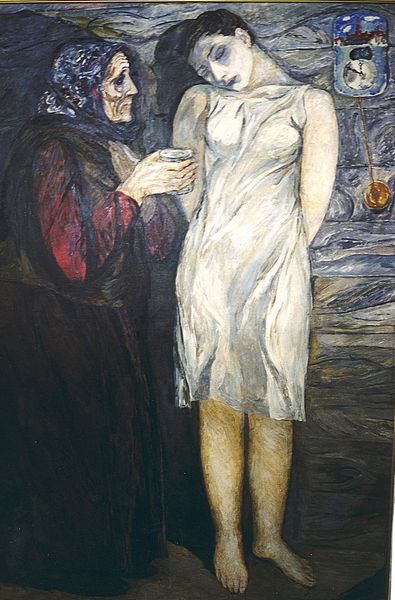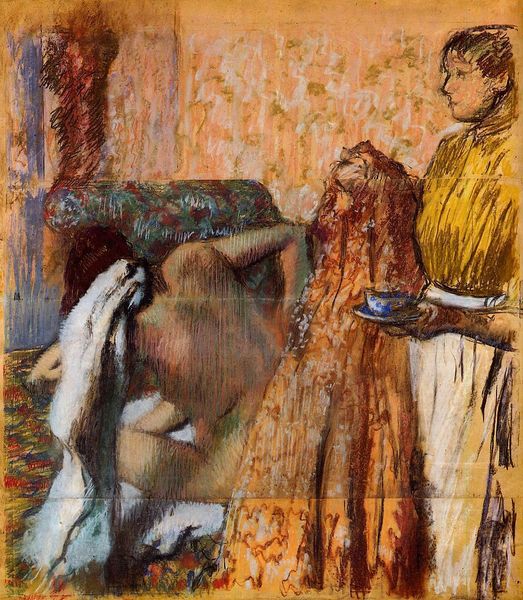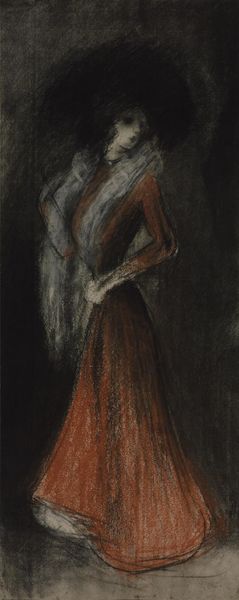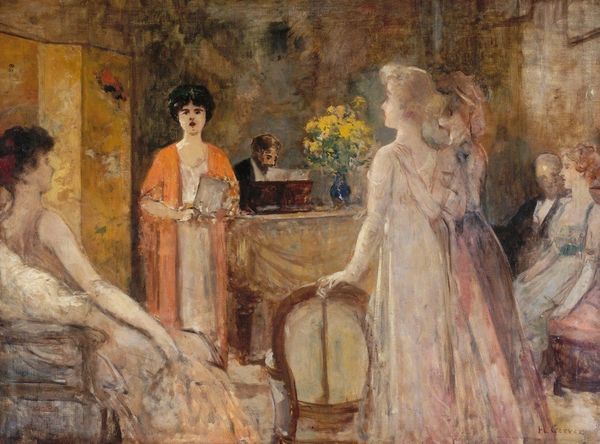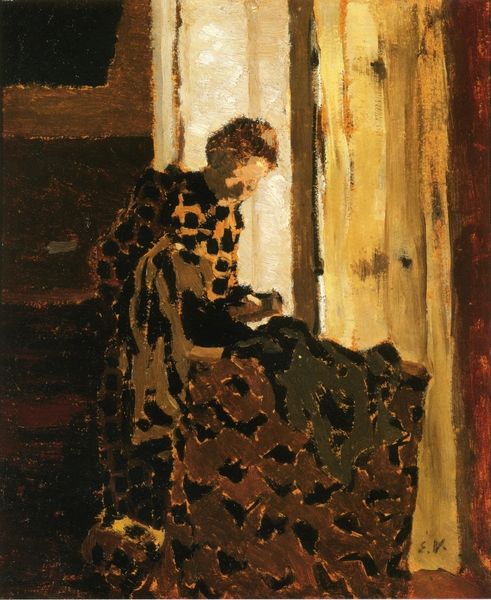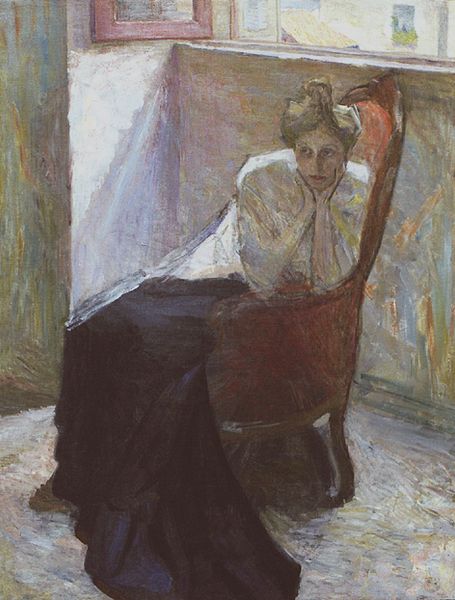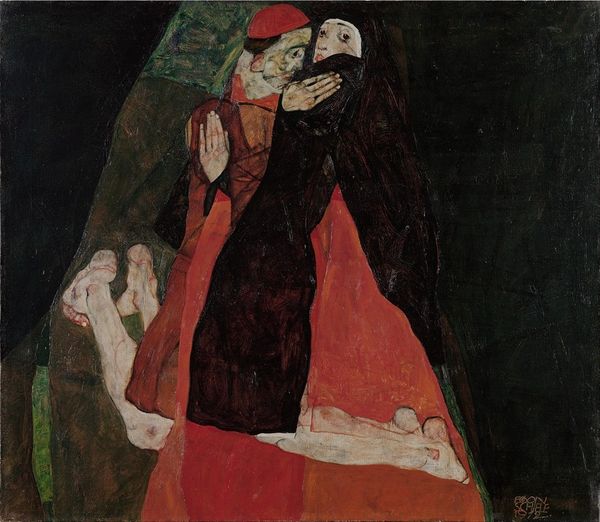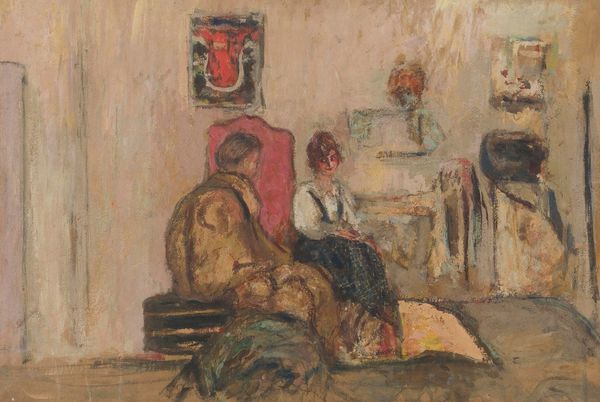
Copyright: Public Domain: Artvee
Curator: This is Edward Burne-Jones' "Fair Rosamund and Queen Eleanor," painted between 1862 and 1863. Editor: My initial reaction is that of hushed intrigue. The limited palette and soft edges evoke a scene veiled in secrecy and perhaps impending dread. Curator: Indeed. The painting depicts a pivotal moment in the legend of Fair Rosamund, mistress of King Henry II, and his wife, Queen Eleanor of Aquitaine. Burne-Jones uses the visual language of the Pre-Raphaelites to engage with themes of female power, betrayal, and courtly intrigue. Eleanor, as the wronged wife, becomes a figure of vengeful authority within the confines of patriarchal society. Editor: Focusing on the formal elements, the composition is striking. We have a stark division created by those heavy, dramatic curtains. Rosamund is bathed in light, innocent and unaware, while Eleanor is shrouded in shadow, a figure almost dissolving into the background. The circular element above Rosamund--some sort of ornate wheel or clock--seems to suggest that Rosamund's time is running out. Curator: Exactly. The visual structure echoes the narrative structure, emphasizing Eleanor’s role. Burne-Jones carefully constructs the setting to reinforce ideas about gender roles, infidelity, and justice within a 12th-century framework. Editor: And there's the textural contrast as well. Rosamund’s flowing gown juxtaposes against the heavy velvet drapes. I wonder if those curtains function as a metaphorical barrier – both concealing and revealing the impending confrontation. Curator: Absolutely, they could represent both the secrets hidden within the royal court and the liminal space between Rosamund's idyllic world and the encroaching threat. It is not accidental. The strategic deployment of line, form, and color allows Burne-Jones to explore complex power dynamics. Editor: This painting's formal qualities effectively intensify its historical narrative, which speaks volumes about both the era depicted and the Victorian era's obsession with such subjects. It offers a potent visual statement of clandestine and powerful relationships. Curator: Looking at “Fair Rosamund and Queen Eleanor," we glimpse Burne-Jones’ insightful social commentary that still holds value when examining art today.
Comments
No comments
Be the first to comment and join the conversation on the ultimate creative platform.
